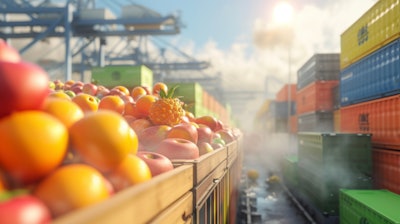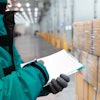
At the inaugural convening of the White House Council on Supply Chain Resilience in 2023, the White House stated that robust and efficient supply chains are fundamental to a strong economy. And yet, each year $1 trillion of food goes to waste. Of this food wastage, approximately 40% is caused by post-harvest agricultural supply chain inefficiencies.
Although logistics is the perennial tether that links food producers to American consumers, the system has long been plagued with outdated technology, often unable to maintain the cold temperatures needed to keep food fresh.
And yet for 50 years, the issue has been treated as a necessary evil not only within the food transportation industry but also in the biopharmaceutical industry, which loses around $35 billion a year due to inefficient temperature control.
The food wastage epidemic starts and ends with the supply chain, and with staggering losses catalyzing a need for its reinvention, 2024 should be the year companies start to put cold chain technology at the heart of their investment strategy.
Holding the cold
Over the last few decades, population expansion, culinary habits, and surges in online deliveries have permanently altered the fabric of U.S. food supply chains. Now, over 2 million farms, 750,000 restaurants and 60,000 grocery stores are feeding the nation. Convenience and quality have become pillars of the industry, but the food supply chain is not keeping pace.
Most of the food an average American eats is transported in refrigerated trucks, vans and ships designed to maintain cold temperatures for sustained periods. In the industry, this is called the cold chain. Not only will food spoil if the container’s temperature flat lines, a mere 3- or 4-degree centigrade lapse in temperature can cause an accumulation of costly internal moisture. This phenomenon can rapidly metastasize into more systemic issues such as clogged filters and altered refrigerant flows within the container, leading to shelf-life reductions and billions of dollars of needlessly disposed fresh fruit, vegetables and meat.
Consumer sway towards online grocery orders and the additional last mile of home food deliveries is only increasing demand for efficient cold-chains, with 2023 seeing a record 7.2% of all U.S. food shopping being purchased online, compared to just 2.7% in 2018.
Solving the cold
Modernizing an industry reliant on decades-old technology is no mean feat, especially when considering the expanse of the U.S. supply chain, and the 47,000 food trucks currently operating within it. Removing moisture from shipping containers is an achievable first step companies can take toward improving their cold chain.
Technology such as hydrophobic insulation can reduce the heat transfer between products and the environment, enhancing the circulation needed for balanced refrigeration throughout a container. If a container’s refrigeration unit has to work overtime to compensate for cold loss, it will continue to inflict an annual dent in the revenues of food producers and seller, putting them at a competitive disadvantage.
After holding the cold using insulation technology, the goal of companies should be to reduce overheads by using less electricity to achieve extreme-low temperatures. When refrigeration flow allows the entirety of a container to maintain its temperature, extreme cold chain temperatures of up to -81˚C can help to reduce harmful chemical reactions such as microbial decomposition. Vaccines, biological samples, semiconductors and phase-changing materials are all at the behest of accurate temperature control, representing a growing market that totaled $3 billion in 2023.
The way forward
Although the commercial opportunity for effective and sustained cooling in the food supply chain is vast, perhaps more important is the beneficial ecological effects it can provide. The world’s population is set to increase by two billion people in the next 30 years, according to the United Nations, meaning an increased number of mouths to feed with ever-dwindling resources.
Since 1975, the planet’s population has almost doubled, and yet cold-chain technology has stood still. The current refrigeration system works by converting a liquid to a vapor, holding it in by spraying insulation to the walls of containers, a technology we have relied upon for 50 years.
Holding in cold temperatures and improving the flows of refrigeration should be the north stars of the logistics industry in the coming years, and companies looking to take their first steps into the cold chain’s next generation should start by implementing insulation technology. Once optimized insulation allows units to maintain cold temperatures better, they will be primed for using extreme cold temperatures more effectively.
Wide-scale improvements in cold chain efficiencies in the public and private sectors can have quantifiable impacts not only on corporate revenue, but in humanitarian efforts and environmentalism as well. Organizations willing to act now will be part of a revolution in a logistics industry that currently wastes 40% of the world’s vaccines and 14% of food because of an unreliable cold chain.
















